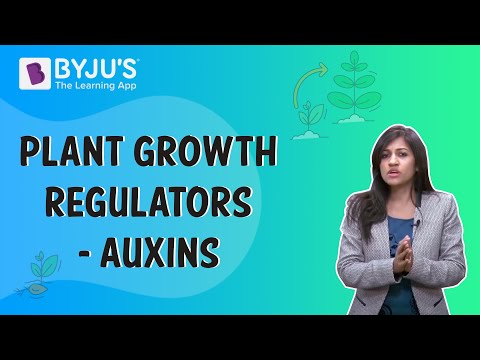According to the CBSE Syllabus 2023-24, this chapter has been renumbered as Chapter 13.
Like animals, even plants undergo growth and development. But unlike animals which have a definite lifespan, most plants can grow indefinitely. But how exactly is growth defined?
Plant Growth and Development
Growth is defined as an irreversible change in physical form. In plants, a combination of cell growth and cell division results in an almost indefinite growth. This ability is due to the presence of tissues called meristems at certain parts of the plant body.
See Also: Important Questions for Class 11 Biology- Plant Growth and Development
Growth – Plant Growth Generally is Indeterminate
- Plants are known to retain the capacity to grow indefinitely throughout their life, hence their growth is unique. This capability can be contributed to the presence of meristems(possessing the capacity to self-perpetuate and divide) at different locations in their body.
- The root and shoot apical meristems are responsible for the primary growth of the plants contributing to the plant elongation through the axis.
- The lateral meristems, vascular cambium, and cork-cambium in gymnosperms and dicotyledonous plants appear later. These meristems increase the girth of active structures resulting in the secondary growth of plants.
Growth – Growth Is Measurable
- At the cellular level, it is the increase in the amount of protoplasm. Growth is measured by a variety of metrics, such as an increase in dry weight, fresh weight, area, volume, length, and cell number.
- In some plants, growth is expressed as an increase in the cell number and increase in cell size, while in some others, growth is measured in terms of the growth of pollen tube, lengthwise, increase in surface area and so on.
Growth – Phases Of Growth
The growth period can be classified into three phases – meristematic(root and shoot apex cells that are constantly dividing), elongation (proximal cells to the meristematic region)and maturation(proximal cells to the elongation phase cells)
Growth Rate
The growth rate is referred to as the increased growth per unit of time. Entities can produce cells in many ways – arithmetic and geometric. Quantitative similarities or differences between the growth of living entities can be done in two ways – absolute growth(measurement and comparison of total growth per unit time) and relative growth rate(growth of given system per unit time)
Differentiation, Dedifferentiation And Redifferentiation
Differentiation – cells from the root, shoot apical meristems and cambium differentiate and mature to carry out different functions. Here the cells undergo some major structural changes both in cell walls and protoplasm.
Dedifferentiation- differentiated cells, after losing the capability to divide, regain the capacity of division in some circumstances. Example – cork cambium forming fully differentiated parenchyma cells.
Redifferentiation – During dedifferentiation, meristems and tissues divide and produce cells again, losing the capacity to divide, however, mature to carry out specific functions. For example -woody tissues in dicotyledonous plants undergo redifferentiation.
Plant Growth Regulators
Plant growth regulators are essentially hormones that control various functions related to the growth and development of the plant. They can be of two types, namely:
- Growth Inhibitors
- abscisic acid
- Benzoic acid
- Salicylic acid
- Coumarin
- Growth Promotors
- Auxins
- Gibberellins
- Cytokinins
In-depth reading: Plant Growth Regulators
Growth Inhibitors, as the name suggests, inhibit the growth of plants and induce dormancy. Growth Promoters promote flowering, the formation of seeds, cell division etc.
For more information on Plant Growth Regulators, watch the below video

Photoperiodism
The response of plants to durations of day/night is known as photoperiodism, as flowering in some plants is based on the combination of light and dark exposures and relative durations. Here, the site of perception of light and dark durations are leaves.
Vernalisation
Depending on exposure to lower temperatures of flowering plants, either qualitatively or quantitatively, is known as vernalisation. This process checks precocious reproductive development sometime later in the growing season. Especially it can be referred to as the promotion of flowering by a duration of low temperature.
| Also Access |
| NCERT Solutions for Class 11 Biology Chapter 15 |
| NCERT Exemplar for Class 11 Biology Chapter 15 |
To explore important questions or related concepts about Plant Growth and Development Class 11, register at BYJU’s.
Further Reading:-
| Plant Growth and Development | Plant Hormones |
Frequently Asked Questions on CBSE Class 11 Biology Notes Chapter 15 Plant Growth and Development
What is meant by growth rate?
Plant growth rate can be measured as the relative increase in leaf area over time by substituting total plant leaf area for total biomass in the conventional RGR equation.
What are auxins?
Auxins are a growth factor hormone which is naturally produced by the plant itself.
What is the difference between growth promoters and growth inhibitors?
Growth promoters promote flowering, the formation of seeds, cell division etc. Whereas growth inhibitors, as the name suggests, inhibit the growth of plants and induce dormancy.
Comments